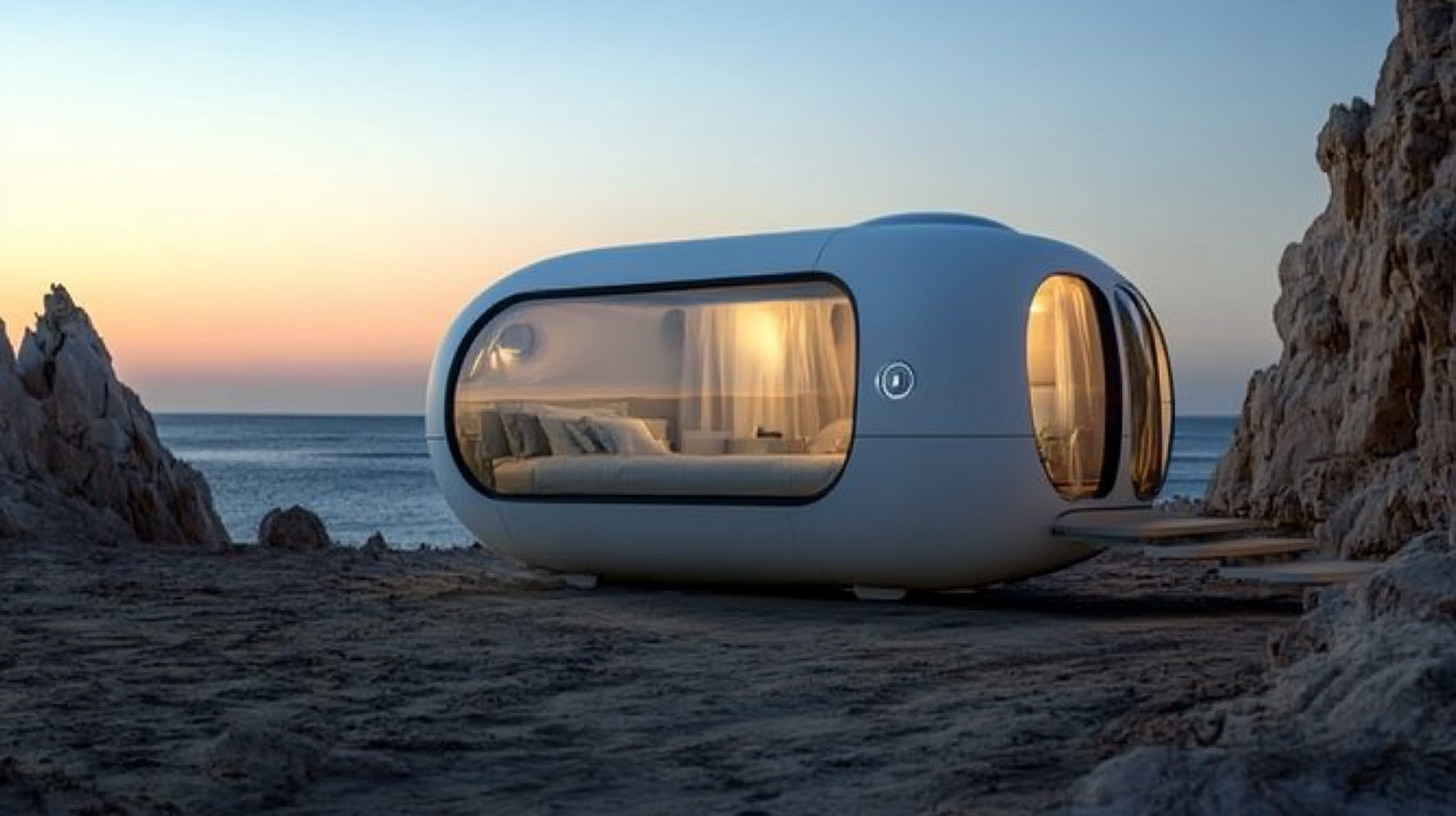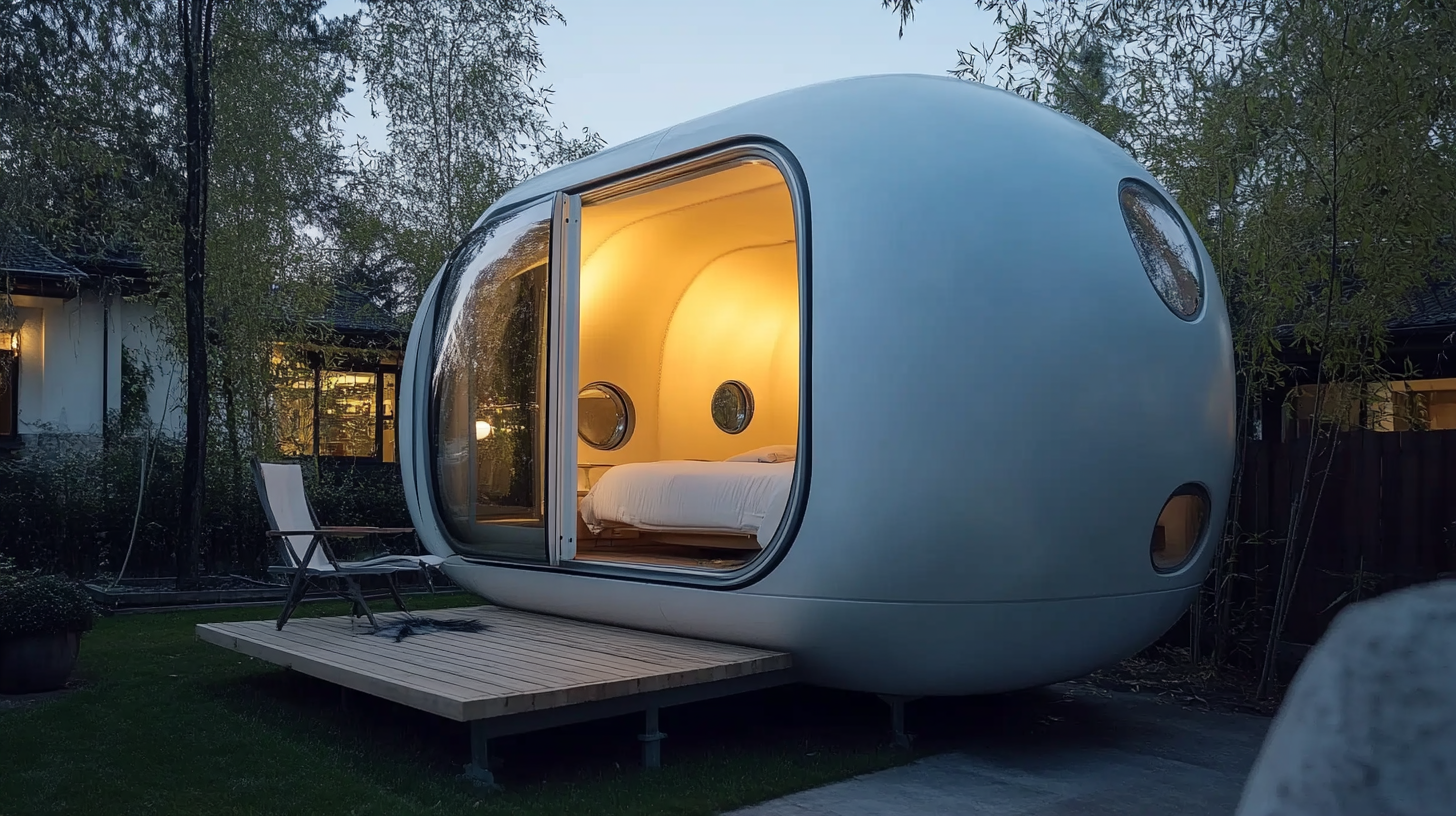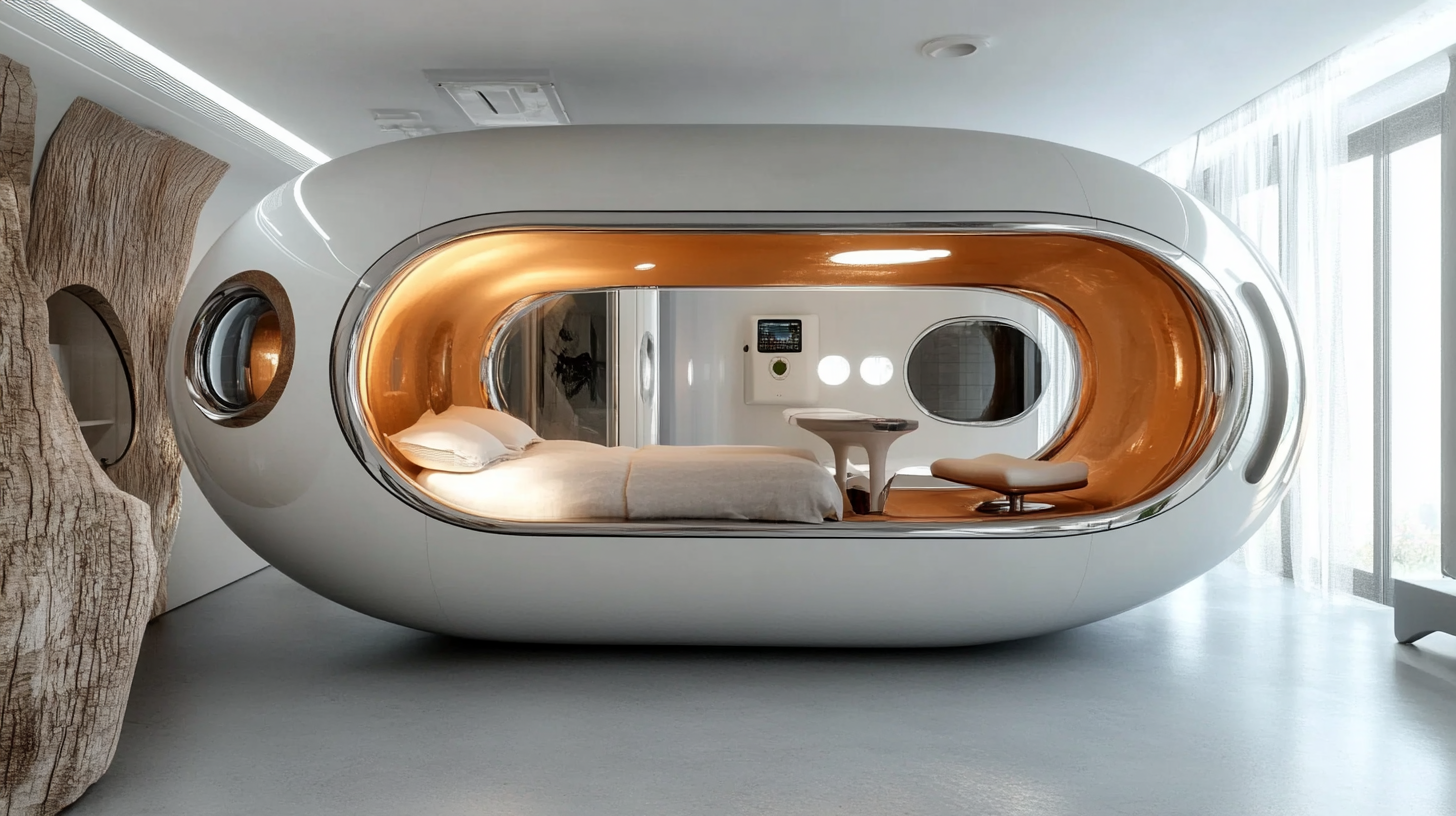
News
Emerging Innovations in Prefab Capsule Houses: Advantages Leading to Sustainable Living by 2025
As the world grapples with the pressing challenges of urbanization and environmental degradation, innovative housing solutions are becoming increasingly imperative. One such groundbreaking development is the **Prefab Capsule House**, a modular and compact living concept that is revolutionizing the way we think about space and sustainability. These cleverly designed homes promise not only to address the housing crisis but also to minimize ecological footprints. With advancements in technology and design, prefab capsule houses are setting the stage for a new era of environmentally conscious living that caters to diverse lifestyles and needs.
By 2025, it is anticipated that the advantages of prefab capsule houses will lead the way in promoting sustainable living. Their quick assembly, energy efficiency, and use of sustainable materials make them an attractive option for eco-conscious individuals and families alike. These homes are designed to adapt to various environments, making them suitable for urban, suburban, and even remote settings. As we delve deeper into the emerging innovations surrounding prefab capsule houses, we will explore how they not only provide a viable solution to the housing crisis but also contribute significantly to a more sustainable future.

Benefits of Prefab Capsule Houses for Eco-Friendly Living
Prefab capsule houses are rapidly gaining traction as a viable solution for eco-friendly living. These innovative structures are designed with sustainability at their core, making them an attractive option for those seeking to reduce their environmental footprint. The modular design allows for efficient use of materials, minimizing waste during construction and providing a cleaner manufacturing process. This approach not only conserves resources but also promotes the use of sustainable materials, such as recycled plastics and responsibly sourced wood.
One of the standout benefits of prefab capsule houses is their energy efficiency. Many designs incorporate advanced insulation techniques and energy-efficient systems, such as solar panels and rainwater harvesting, which significantly lower energy consumption and reduce utility bills. As these homes are often built in locations that maximize natural light and ventilation, they create comfortable living spaces that require less reliance on heating and cooling systems. By making energy-conscious decisions, residents can enjoy a more sustainable lifestyle while fostering a deeper connection with their environment.
Furthermore, the flexibility of prefab capsule houses makes them ideal for various living conditions. Whether used as a primary residence, vacation home, or temporary shelter, these spaces can be customized to fit individual needs. This adaptability allows for a minimalistic lifestyle that encourages conscious consumption and fosters a greater appreciation for living with less. As more individuals become aware of the impact of their housing choices, prefab capsule houses present a promising path toward a more sustainable and harmonious way of living.
Emerging Innovations in Prefab Capsule Houses: Advantages Leading to Sustainable Living by 2025
Integration of Smart Technology in Capsule House Designs
In the evolving landscape of modern living, the integration of smart technology into prefab capsule houses promises to revolutionize our approach to sustainable living. These innovative dwellings are designed to maximize space while minimizing their ecological footprint, making them an ideal choice for environmentally conscious individuals. By 2025, we can anticipate an increase in the adoption of smart features that enhance energy efficiency, security, and comfort within these compact homes.
Smart technology in capsule house designs includes advanced energy management systems that optimize electricity consumption based on real-time data. These systems can autonomously adjust lighting, heating, and cooling based on occupancy and weather conditions, leading to significant reductions in energy waste. Additionally, solar panels and smart battery systems integrated into the design will allow homeowners to harness renewable energy efficiently, further contributing to sustainable living.
Furthermore, the incorporation of IoT devices in these compact homes enhances the overall living experience. Homeowners can control various aspects of their living environment remotely through smartphone applications, from adjusting temperature settings to monitoring air quality. Security features like smart locks and surveillance cameras can also be seamlessly integrated, providing peace of mind without compromising on space or aesthetics. As more individuals embrace minimalist lifestyles, the fusion of smart technology with prefab capsule houses not only supports sustainable living but also sets a new standard for future housing solutions.
Emerging Innovations in Prefab Capsule Houses: Advantages Leading to Sustainable Living by 2025 - Integration of Smart Technology in Capsule House Designs
| Innovation | Description | Sustainability Benefits | Smart Technology Integration |
|---|---|---|---|
| Modular Design | Prefabricated modules that can be easily assembled on-site. | Reduction in construction waste and time. | Integration of IoT devices for optimized energy usage. |
| Eco-friendly Materials | Utilization of recycled and sustainable materials for construction. | Lower environmental impact and improved air quality. | Smart sensors to monitor air quality and make adjustments. |
| Energy-efficient Systems | Incorporation of solar panels and energy-efficient appliances. | Significant reduction in energy consumption. | Smart home systems to automate energy usage. |
| Space Optimization | Clever design that maximizes usable space in compact living. | Encourages minimalist living and reduces clutter. | Smart layout apps to help residents organize effectively. |
Cost-Effectiveness and Affordability of Modular Housing
The modular housing market is witnessing rapid growth, driven by increasing demand for cost-effective and affordable living solutions. According to research by McKinsey, the modular construction industry is projected to reach a market size of $130 billion by 2030. This shift towards prefabricated homes, particularly capsule houses, highlights the rising preference for sustainable living options that cater to both financial and environmental needs.
One of the most significant advantages of modular housing is its ability to drastically reduce construction costs. A report from Deloitte suggests that modular homes can be built 10-20% cheaper than traditional homes, largely due to reduced labor costs and shorter construction times. By utilizing pre-manufactured components, builders can streamline the construction process and minimize waste, which is critical in a time when rising material prices are a concern for many homebuyers.
Furthermore, the affordability of prefab capsule houses makes them an attractive option for diverse demographics. The National Association of Home Builders (NAHB) indicates that there is a growing interest among millennials and younger generations seeking affordable housing alternatives. With average home prices skyrocketing, these capsule homes offer a solution that not only meets budgetary constraints but also promotes sustainable living through energy-efficient designs and reduced carbon footprints. As innovations continue to emerge in this sector, the future of housing looks brighter, presenting opportunities for environmentally conscious and economically mindful individuals alike.

Sustainable Materials and Their Role in Capsule House Construction
The rise of prefab capsule houses represents a significant shift in sustainable living, particularly through the innovative use of sustainable materials in their construction. These compact homes are designed not only for efficient use of space but also for minimizing environmental impact. By incorporating materials such as recycled steel, bamboo, and sustainably harvested wood, capsule houses achieve a much lower carbon footprint compared to traditional building methods. This transition to eco-friendly materials is not merely a trend; it is an essential step toward addressing the current housing crisis while promoting sustainability.
Sustainable materials play a crucial role in enhancing the energy efficiency of capsule houses. For example, insulating materials derived from recycled products help maintain optimal indoor temperatures, reducing the need for artificial heating and cooling. Furthermore, the use of innovative bio-based composites means that the homes emit fewer volatile organic compounds (VOCs), improving indoor air quality and contributing to healthier living environments. By prioritizing such materials, the construction of prefab capsule houses reflects a growing awareness of the interconnectedness between human well-being and the environment.
Moreover, the versatility of these sustainable materials allows for greater design flexibility and creativity. Architects and builders can experiment with various forms and finishes without compromising the eco-friendly ethos of the project. This ability to incorporate aesthetic appeal into sustainable design not only enhances the visual landscape but also encourages a wider acceptance of green building practices among potential homeowners. As we approach 2025, it’s clear that the future of living—marked by innovative construction and sustainable materials—is not just a possibility but an exciting reality in the realm of prefab capsule houses.

Future Trends: What to Expect in Capsule Housing by 2025
As we move towards 2025, the trend of capsule housing is set to reshape urban living spaces significantly. With the rise of innovative designs, capsule houses offer a compact, efficient living solution that aligns perfectly with the growing demand for sustainability. The integration of green technologies and space-efficient designs in these prefab homes not only addresses housing shortages but also contributes to eco-friendly lifestyles.
Recent developments in Japan have further highlighted the versatility of capsule concepts, with the introduction of “capsule offices” in train stations. This innovative approach allows individuals to work in a quiet, contained environment while being part of the bustling urban landscape. Such innovations reflect a broader shift in urban living, where space optimization and multifunctional utilities are becoming essential. As reported, the global market for related products is expected to grow, with significant investments projected to fuel advancements in prefabrication technologies.
The potential impact of these trends cannot be underestimated. The aroma laundry capsule market, for instance, is anticipated to witness substantial growth by 2025, indicating a larger consumer trend towards convenient, sustainable solutions in daily life. These advancements signal a promising future for capsule housing, ultimately leading to a transformative shift in how we envision modern living spaces. With capsule designs becoming more prevalent, we can expect a renewed focus on sustainability that resonates with the needs and values of tomorrow's urban dwellers.
